What is Spanish food? Prepare to embark on a flavorful adventure as FOODS.EDU.VN unveils the vibrant and diverse world of Spanish cuisine, from tantalizing tapas to comforting stews. Discover the essential ingredients, regional specialties, and time-honored techniques that make Spanish gastronomy so unique. Craving more culinary wisdom? Explore FOODS.EDU.VN for an even deeper dive into the art of Spanish cooking, including delightful Mediterranean flavors, authentic recipes, and exquisite Iberian dishes.
1. Unveiling the Essence of Spanish Cuisine
Spanish food is more than just sustenance; it’s a celebration of life, culture, and community. It reflects the country’s diverse landscapes, rich history, and passionate people. From the sun-drenched coasts to the rugged mountains, each region of Spain boasts its own unique culinary traditions, making it a true gastronomic paradise. Spanish cuisine is characterized by its bold flavors, fresh ingredients, and emphasis on sharing.
1.1 Core Characteristics of Spanish Food
- Fresh, High-Quality Ingredients: Spanish cuisine relies heavily on fresh, seasonal produce, seafood, and meats. Olive oil, garlic, saffron, and pimentón (Spanish smoked paprika) are staple ingredients that add depth and complexity to dishes.
- Regional Diversity: From the seafood paella of Valencia to the hearty stews of Castile and León, each region offers its own distinct culinary identity.
- Tapas Culture: The tradition of sharing small plates, or tapas, is an integral part of Spanish social life. Tapas allow diners to sample a variety of flavors and textures, creating a vibrant and convivial dining experience.
- Simplicity and Authenticity: While some Spanish dishes can be elaborate, many are based on simple, time-honored recipes passed down through generations.
1.2 Key Ingredients in the Spanish Pantry
To truly understand Spanish food, it’s essential to familiarize yourself with some of its key ingredients:
| Ingredient | Description | Culinary Use |
|---|---|---|
| Olive Oil | A cornerstone of Spanish cuisine, used for everything from cooking and frying to drizzling over salads and bread. Different varieties offer varying flavors and intensities. | Used in almost every dish. Drizzled over salads, vegetables, and grilled meats. Essential for frying and sautéing. |
| Garlic | A pungent bulb that adds depth and aroma to countless Spanish dishes. | Used in stews, sauces, soups, and meat dishes. Often paired with olive oil and chili peppers. |
| Pimentón (Smoked Paprika) | Made from dried, smoked peppers, pimentón adds a distinctive smoky flavor and vibrant color to many Spanish dishes. It comes in sweet (dulce), bittersweet (agridulce), and spicy (picante) varieties. | Used to season chorizo, paella, patatas bravas, and other dishes. Adds depth and color. |
| Saffron | The world’s most expensive spice, saffron adds a delicate aroma and golden hue to paella and other rice dishes. | Essential for paella. Also used in stews and sauces for color and flavor. |
| Sherry Vinegar | Made from sherry wine, this vinegar adds a tangy and complex flavor to dressings, sauces, and marinades. | Used in salad dressings, marinades for meats, and sauces for seafood. |
| Jamón Ibérico | Cured ham from Iberian pigs, prized for its rich, nutty flavor and marbled texture. | Enjoyed on its own as a tapa, or used to add flavor to stews, soups, and salads. |
| Chorizo | A cured sausage seasoned with pimentón and garlic, chorizo comes in various levels of spiciness and adds a distinctive flavor to many Spanish dishes. | Used in stews, paella, and tapas. Can be grilled, fried, or added to soups. |
| Seafood | Spain’s extensive coastline provides a wealth of fresh seafood, including prawns, mussels, clams, octopus, and various types of fish. | Grilled, fried, baked, or used in paella, stews, and soups. A staple ingredient in many coastal regions. |
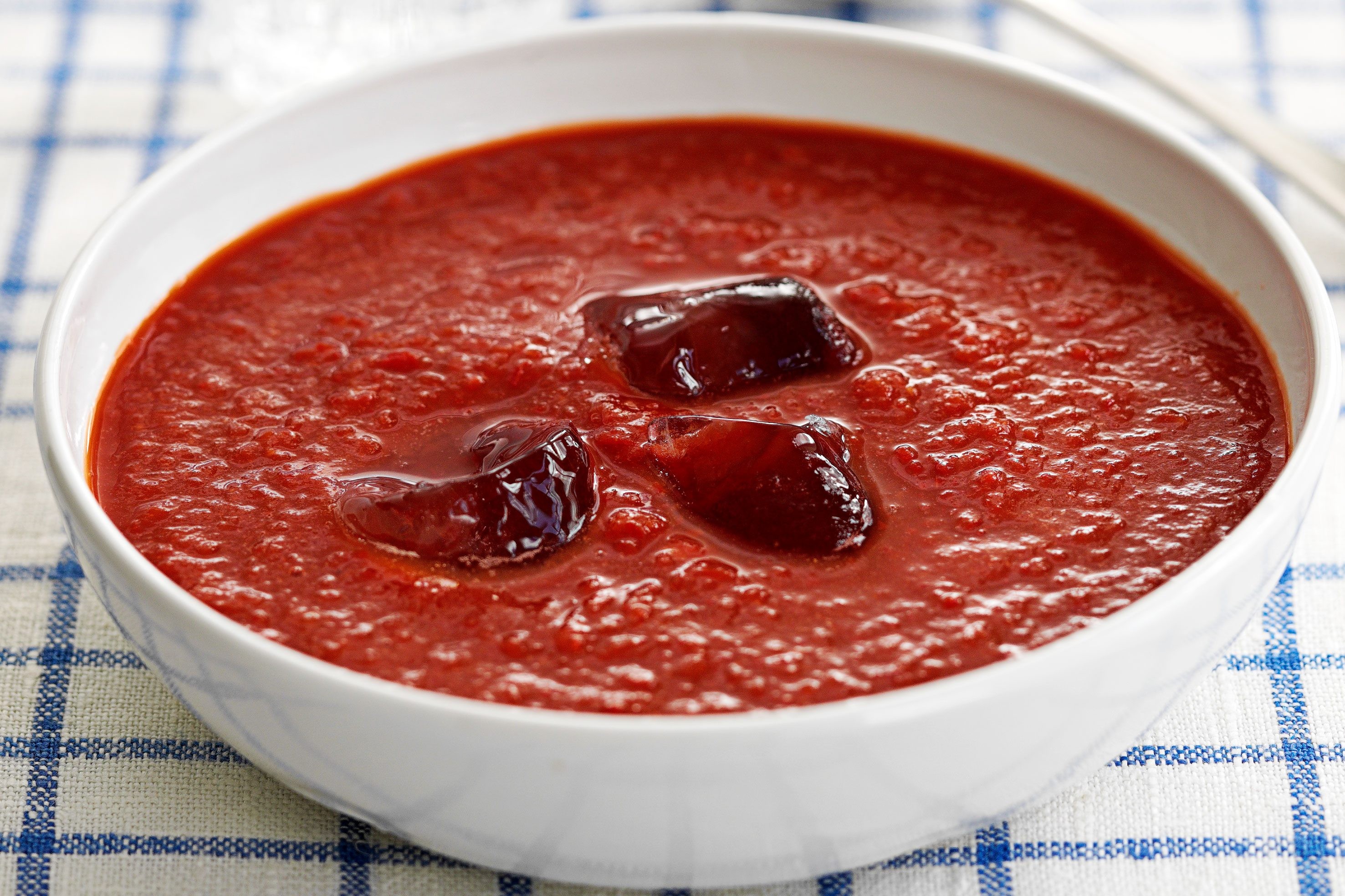
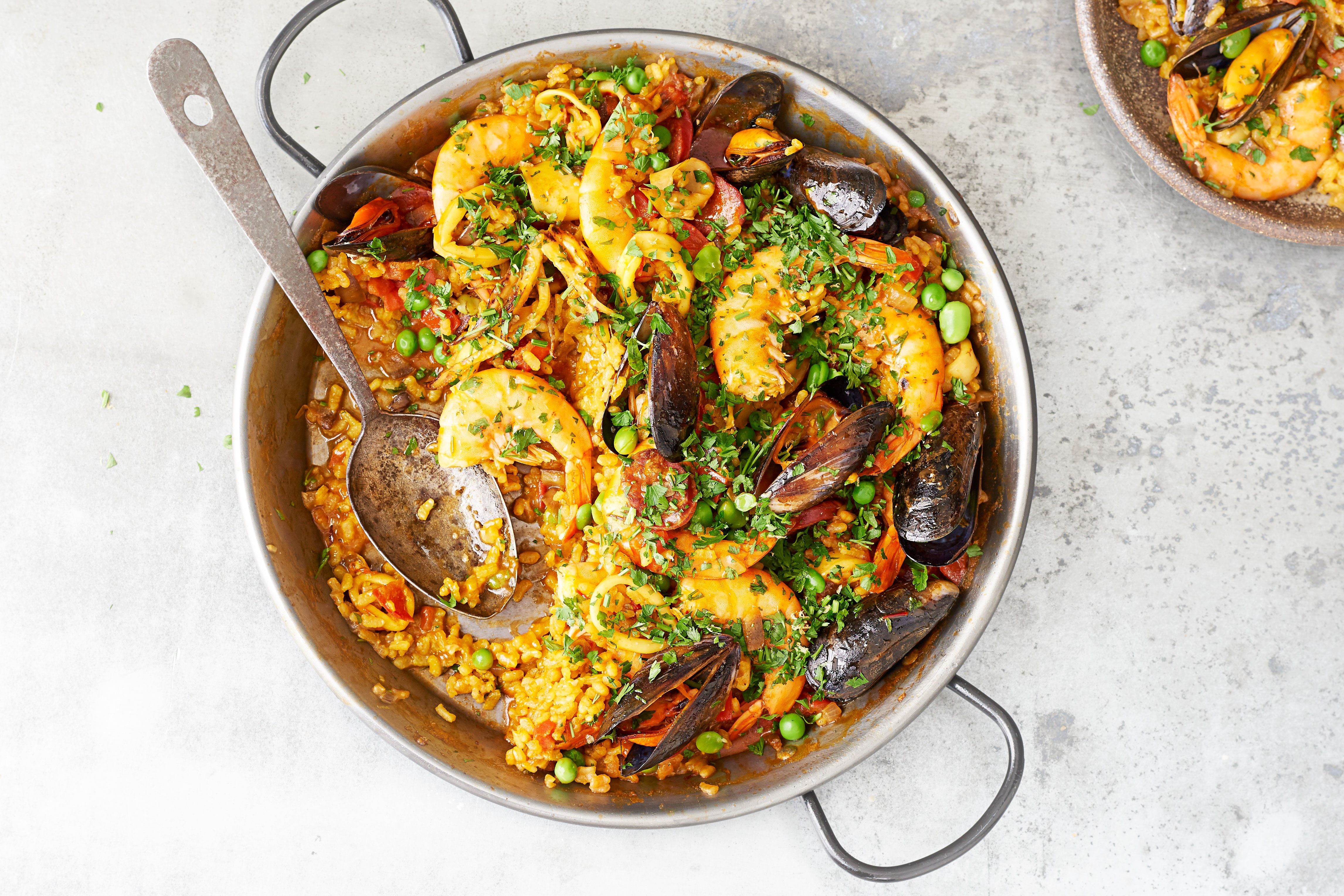
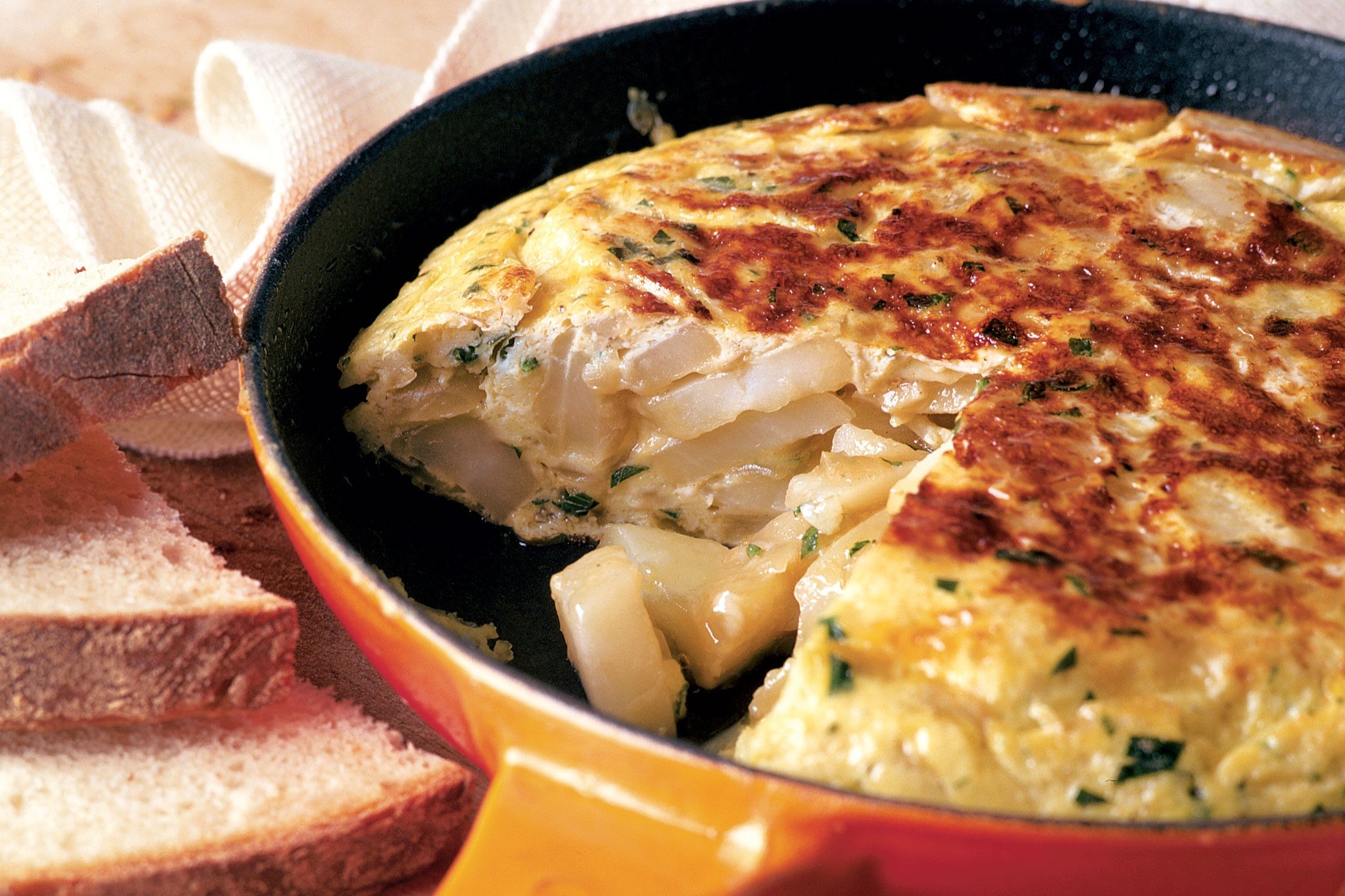

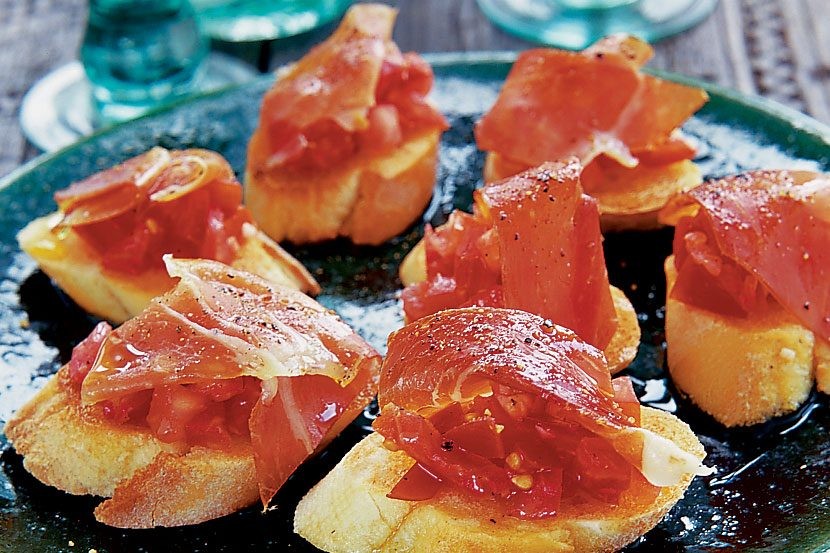
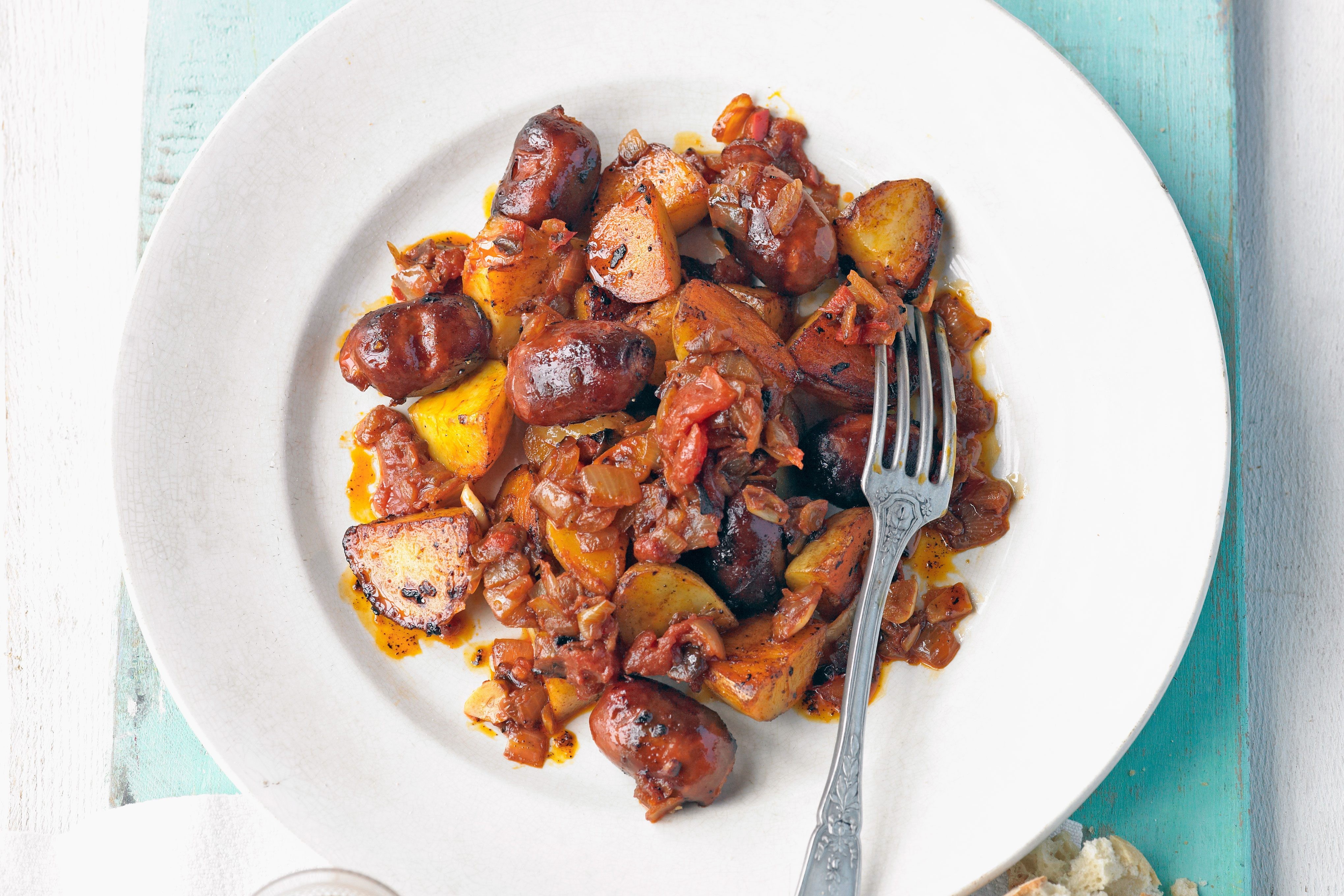
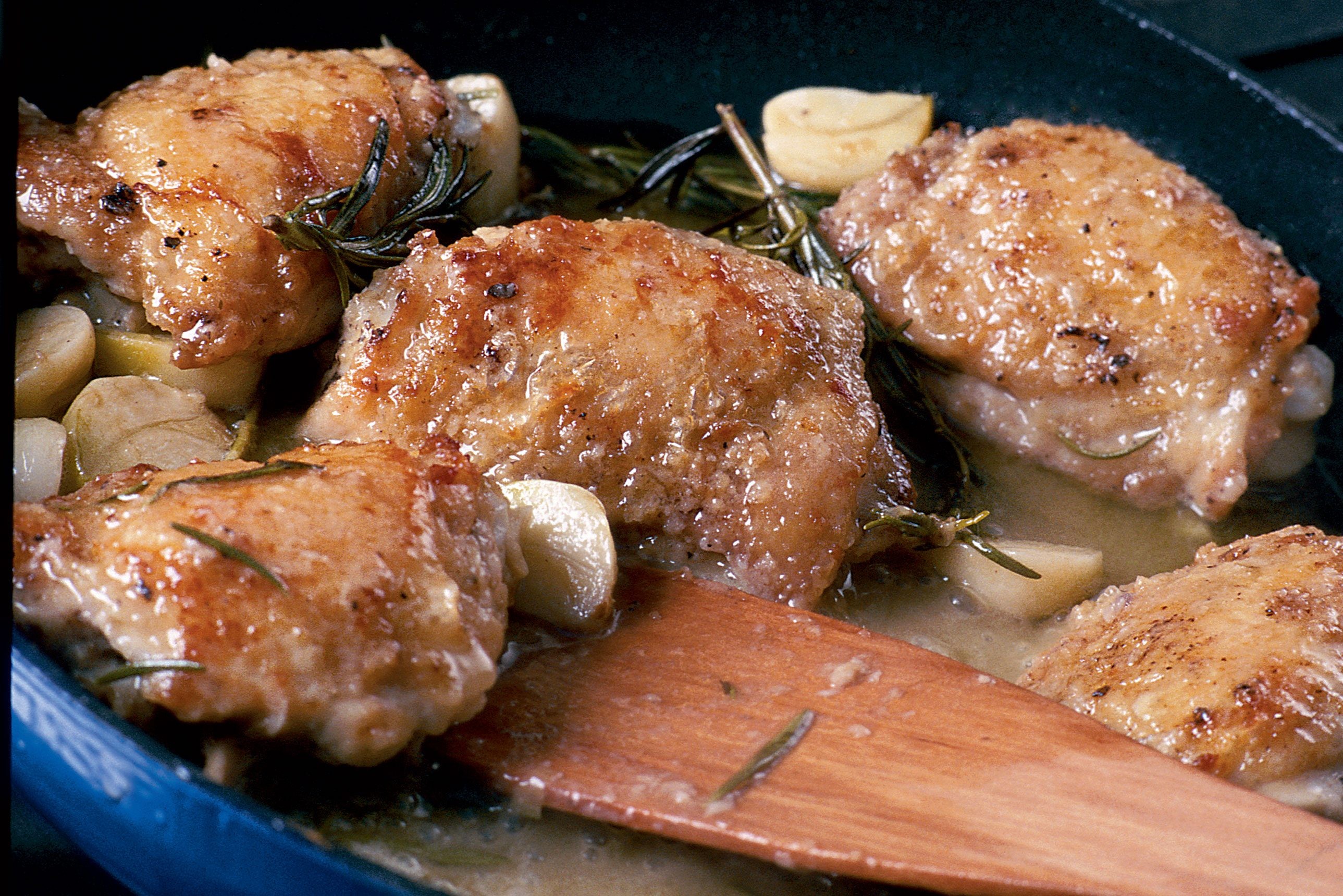
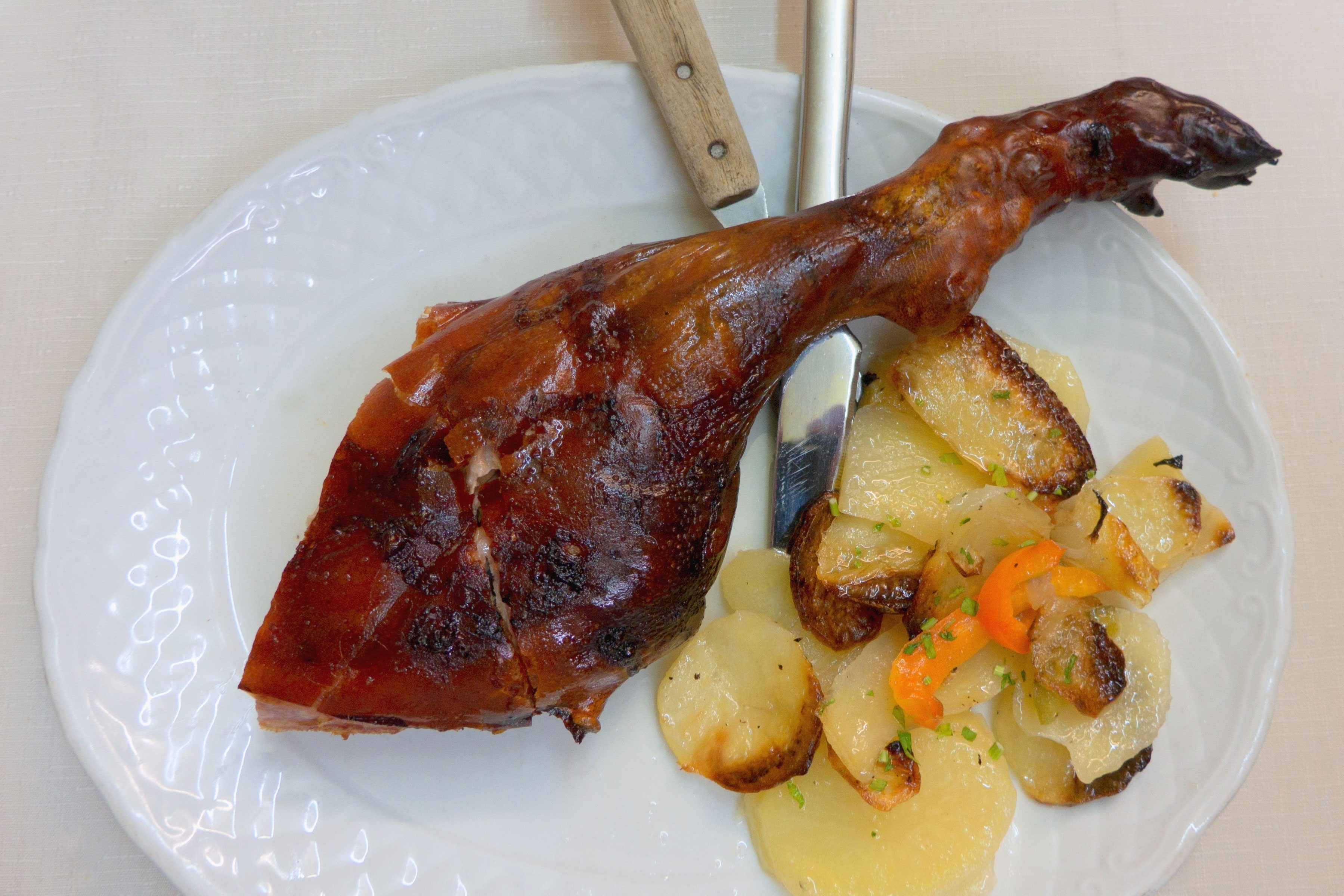
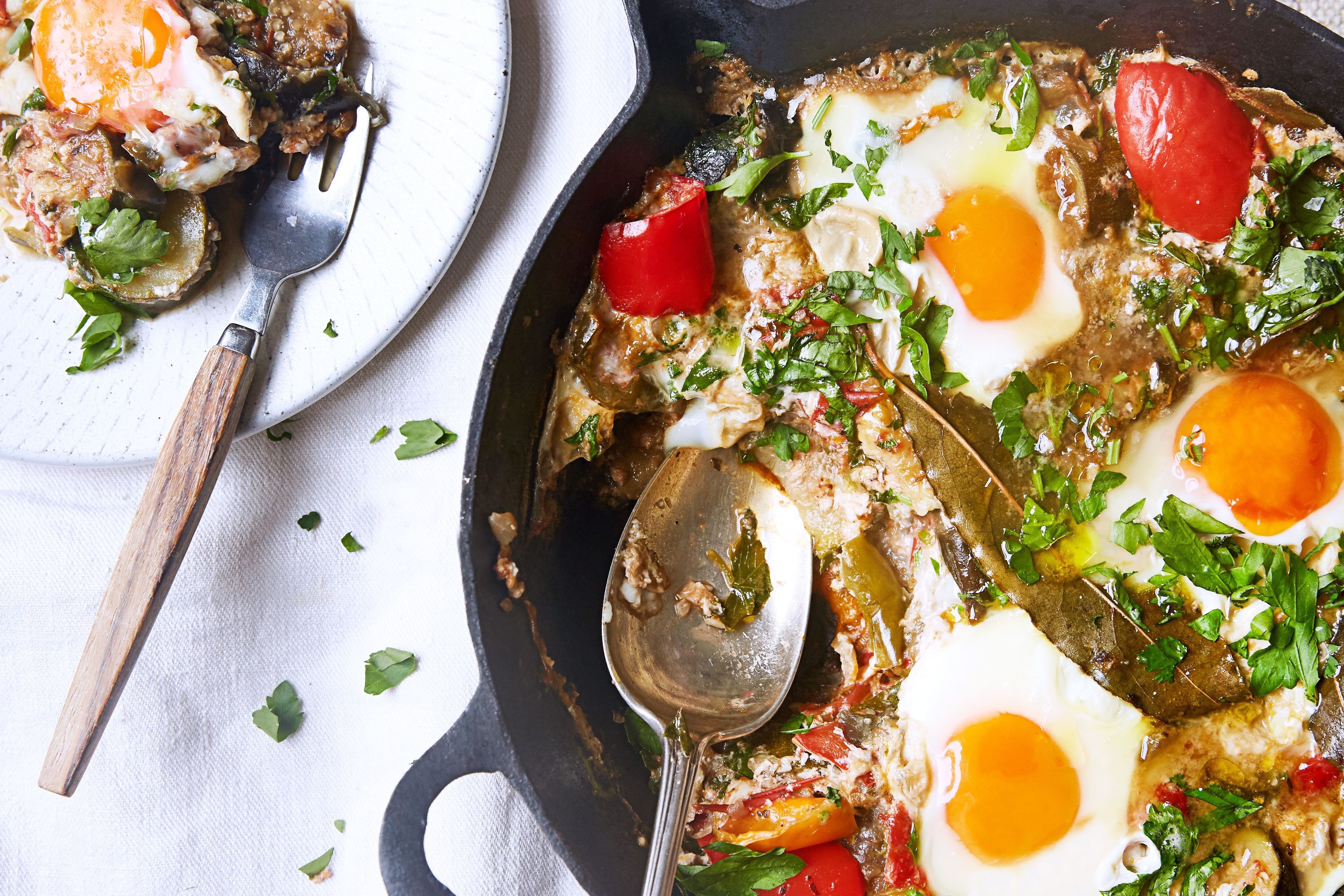
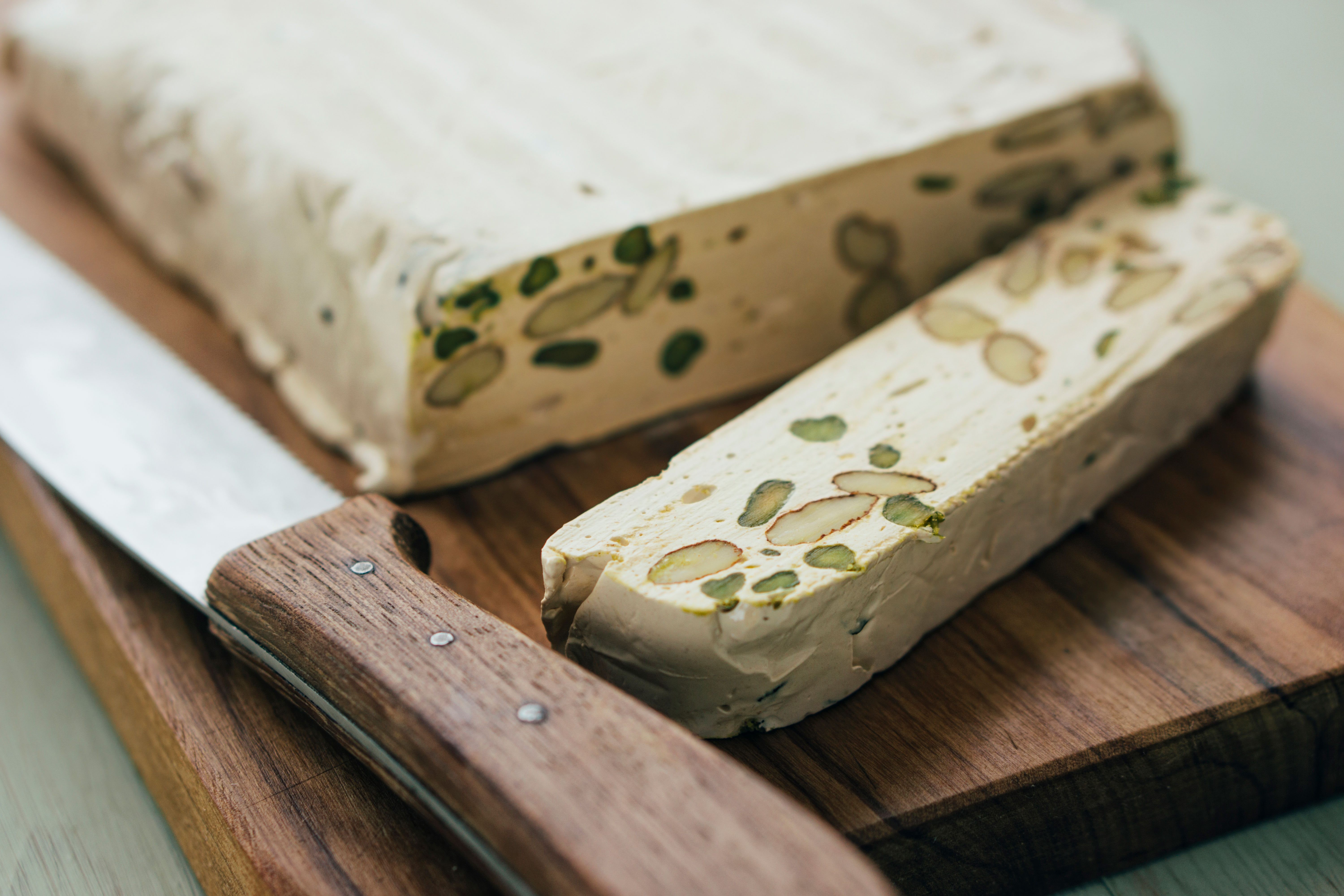
2. Must-Try Spanish Dishes: A Culinary Odyssey
Now that we’ve explored the essence of Spanish cuisine, let’s dive into some of the most iconic and delicious dishes that Spain has to offer.
2.1 Gazpacho: The Quintessential Summer Soup
Gazpacho is a refreshing cold soup made from blended raw vegetables, typically tomatoes, cucumbers, peppers, onions, garlic, and olive oil. Originating in Andalusia, southern Spain, it’s the perfect way to beat the summer heat. Its vibrant flavors and refreshing coolness make it a beloved dish throughout Spain and beyond.
Key characteristics:
- Served cold, perfect for hot weather.
- Made with fresh, raw vegetables.
- Often garnished with chopped vegetables or croutons.
Variations:
- Salmorejo: A thicker, creamier version of gazpacho from Córdoba, often served with diced ham and a drizzle of olive oil.
- Ajoblanco: A white gazpacho made with almonds, garlic, bread, and olive oil.
2.2 Paella: A Symphony of Flavors in Rice
Paella is perhaps the most internationally recognized Spanish dish. This iconic rice dish originates from Valencia and is traditionally cooked in a large, shallow pan over an open fire. Paella is a celebration of flavors and textures, combining rice with a variety of ingredients such as seafood, chicken, rabbit, and vegetables.
Key characteristics:
- Uses special short-grain rice varieties like Bomba or Calasparra, known for their ability to absorb flavors.
- Saffron is a key ingredient, giving the rice its distinctive golden color and aroma.
- The socarrat, the crispy layer of rice at the bottom of the pan, is considered a delicacy.
Variations:
- Paella Valenciana: The original paella, made with chicken, rabbit, runner beans, and butter beans.
- Paella de Marisco: Seafood paella, featuring prawns, mussels, clams, and other seafood.
- Paella Mixta: A mixed paella, combining seafood, chicken, and vegetables.
For expert paella tips, visit FOODS.EDU.VN and discover the secrets to creating a truly authentic and unforgettable paella experience.
2.3 Tortilla Española: The Humble Yet Exquisite Omelette
Tortilla Española, or Spanish omelette, is a simple yet satisfying dish made with eggs, potatoes, and onions. This unassuming omelette is a staple in Spanish households and tapas bars, and it’s a testament to the power of simple ingredients.
Key characteristics:
- Potatoes and onions are slow-fried in olive oil until tender.
- The eggs are lightly beaten and mixed with the potatoes and onions.
- The omelette is cooked slowly in a pan, flipped, and cooked on the other side.
Variations:
- Some people add chorizo, ham, or vegetables to the tortilla.
- The thickness of the tortilla can vary, depending on preference.
2.4 Gambas al Ajillo: Sizzling Garlic Prawns
Gambas al Ajillo is a classic tapas dish consisting of prawns sautéed in garlic-infused olive oil with a touch of chili. The dish is typically served sizzling hot in an earthenware dish, and the aroma is simply irresistible.
Key characteristics:
- Prawns are cooked quickly in hot olive oil, ensuring they remain tender and juicy.
- Garlic is the star of the dish, infusing the oil with its pungent aroma.
- A touch of chili adds a subtle kick.
2.5 Tostas de Tomate y Jamón: A Simple Slice of Heaven
Tostas de Tomate y Jamón is a simple yet incredibly satisfying tapa consisting of toasted bread rubbed with garlic and ripe tomatoes, drizzled with olive oil, and topped with slices of Jamón Ibérico.
Key characteristics:
- The quality of the ingredients is key to this dish. Use ripe, flavorful tomatoes and high-quality Jamón Ibérico.
- The garlic adds a subtle pungency that complements the sweetness of the tomatoes and the saltiness of the ham.
- The olive oil adds richness and ties all the flavors together.
2.6 Patatas Bravas: Spain’s Spicy Potatoes
Patatas Bravas are fried potato chunks served with a spicy tomato-based sauce. This is a staple tapas dish found in nearly every bar in Spain, with regional variations in the sauce recipe.
Key characteristics:
- The potatoes are typically fried until crispy on the outside and fluffy on the inside.
- The bravas sauce is usually made with tomatoes, pimentón, garlic, and chili.
- Some variations include a dollop of aioli (garlic mayonnaise) on top.
2.7 Pollo al Ajillo: Grandma’s Garlic Chicken
Pollo al Ajillo is a comforting and flavorful chicken dish cooked with plenty of garlic, olive oil, and herbs. This is a classic Spanish dish that is often made at home, and every family has its own version.
Key characteristics:
- The chicken is browned in olive oil with plenty of garlic cloves.
- Herbs like rosemary and thyme add aroma and flavor.
- A splash of dry sherry or white wine adds depth of flavor.
2.8 Cochinillo Asado: Roast Suckling Pig
Cochinillo Asado is a traditional dish from Segovia, consisting of a whole suckling pig roasted in a wood-fired oven. The pig is roasted until the skin is crispy and golden brown, and the meat is incredibly tender and juicy.
Key characteristics:
- The pig is traditionally roasted whole in a wood-fired oven.
- The skin is incredibly crispy and golden brown.
- The meat is so tender it can be cut with the edge of a plate.
2.9 Pisto: Spanish Ratatouille
Pisto is a Spanish vegetable stew similar to ratatouille, typically made with tomatoes, peppers, courgettes, onions, and garlic. This dish is popular in the La Mancha region of Spain and is often served as a starter or side dish.
Key characteristics:
- The vegetables are slow-fried in olive oil until tender and slightly caramelized.
- The dish is typically seasoned with garlic, herbs, and spices.
- Pisto is often served with fried eggs or chorizo.
2.10 Turrón: A Sweet Spanish Treat
Turrón is a traditional Spanish nougat made with almonds, honey, and egg white. This sweet treat is especially popular during Christmas time, but it can be enjoyed year-round.
Key characteristics:
- Made with almonds, honey, and egg white.
- Comes in two main varieties: soft (Jijona) and hard (Alicante).
- A popular Christmas treat in Spain.
3. Regional Variations: A Culinary Mosaic
Spain’s diverse geography and history have resulted in a rich tapestry of regional cuisines, each with its own unique flavors, ingredients, and traditions.
3.1 Andalusia: The Land of Gazpacho and Sherry
Andalusia, in southern Spain, is known for its hot summers and Moorish heritage. Key culinary influences include:
- Gazpacho: The quintessential Andalusian summer soup.
- Fried Fish (Pescaíto Frito): A variety of fish and seafood, lightly battered and fried.
- Sherry: A fortified wine produced in the Jerez region, used in cooking and as an aperitif.
- Olive Oil: Andalusia is a major producer of olive oil, which is used generously in its cuisine.
3.2 Valencia: The Home of Paella
Valencia, on the east coast of Spain, is famous for its rice dishes, particularly paella. Other culinary highlights include:
- Orxata: A refreshing drink made from tiger nuts.
- All i Pebre: An eel and potato stew seasoned with paprika.
- Turrón: A traditional almond nougat.
3.3 Catalonia: A Blend of Mediterranean Flavors
Catalonia, in northeastern Spain, has a distinct culinary identity influenced by its Mediterranean location and proximity to France. Key dishes include:
- Pa amb Tomàquet: Bread rubbed with tomato and drizzled with olive oil.
- Escalivada: Roasted vegetables, typically eggplant, peppers, and onions.
- Crema Catalana: A custard dessert similar to crème brûlée.
3.4 Basque Country: A Gastronomic Paradise
The Basque Country, in northern Spain, is renowned for its innovative and high-quality cuisine. Key culinary features include:
- Pintxos: Basque-style tapas, often served on skewers.
- Bacalao al Pil Pil: Cod cooked in garlic-infused olive oil.
- Txakoli: A slightly sparkling white wine.
- Idiazabal Cheese: A sheep’s milk cheese with a smoky flavor.
4. The Art of Tapas: Sharing is Caring
Tapas are small, savory dishes that are typically served with drinks in bars and restaurants throughout Spain. The tradition of tapas is an integral part of Spanish social life, and it’s a great way to sample a variety of flavors and textures.
4.1 The Origins of Tapas
The exact origins of tapas are debated, but one popular theory is that they originated as small snacks served to cover (tapar in Spanish) drinks to protect them from insects. Over time, these snacks evolved into the diverse and delicious array of tapas we know today.
4.2 Popular Tapas Dishes
- Patatas Bravas: Fried potatoes with spicy tomato sauce.
- Gambas al Ajillo: Garlic prawns.
- Croquetas: Breaded and fried béchamel fritters, often filled with ham, chicken, or cod.
- Tortilla Española: Spanish omelette.
- Aceitunas: Olives, often marinated in herbs and spices.
- Queso Manchego: A sheep’s milk cheese from the La Mancha region.
- Jamón Ibérico: Cured Iberian ham.
4.3 Tips for Enjoying Tapas
- Go bar-hopping: Try tapas at several different bars to experience the variety of flavors and styles.
- Order a variety of dishes: Don’t be afraid to try new things!
- Share with friends: Tapas are meant to be shared, so bring a group of friends and enjoy the experience together.
- Pair with drinks: Tapas are typically enjoyed with beer, wine, or sherry.
5. Spanish Food and Health: A Balanced Approach
Spanish cuisine, with its emphasis on fresh ingredients and healthy fats like olive oil, can be part of a balanced and nutritious diet.
5.1 Nutritional Benefits of Spanish Food
- Rich in Antioxidants: The abundance of fresh vegetables, fruits, and olive oil provides a wealth of antioxidants, which help protect the body against cell damage.
- Good Source of Healthy Fats: Olive oil, a staple in Spanish cooking, is a source of monounsaturated fats, which are beneficial for heart health.
- Provides Lean Protein: Seafood, chicken, and lean cuts of pork are common ingredients in Spanish dishes, providing a good source of protein.
- High in Fiber: Vegetables and legumes contribute to a high fiber content, promoting healthy digestion.
5.2 Considerations for a Healthy Spanish Diet
- Portion Control: Tapas are a great way to sample a variety of dishes without overeating. Be mindful of portion sizes when eating larger meals.
- Limit Processed Foods: Choose fresh, whole ingredients over processed foods whenever possible.
- Balance Your Diet: Include a variety of foods from all food groups to ensure you’re getting all the nutrients you need.
- Choose Healthy Cooking Methods: Opt for grilling, baking, or sautéing over deep-frying.
FOODS.EDU.VN encourages a balanced approach to enjoying the pleasures of Spanish cuisine while maintaining a healthy lifestyle.
6. Exploring Spanish Beverages: Beyond Sangria
While sangria is perhaps the most well-known Spanish beverage, Spain offers a wide variety of wines, beers, and other drinks to complement its cuisine.
6.1 Spanish Wines
- Rioja: A red wine from the Rioja region, known for its fruity flavors and oaky notes.
- Ribera del Duero: A full-bodied red wine from the Ribera del Duero region.
- Albariño: A crisp white wine from the Galicia region.
- Sherry: A fortified wine from the Jerez region, available in a variety of styles, from dry to sweet.
6.2 Spanish Beers
- Mahou: A popular lager beer from Madrid.
- Estrella Damm: A lager beer from Barcelona.
6.3 Other Spanish Beverages
- Sangria: A wine punch made with red wine, fruit, and brandy.
- Tinto de Verano: A refreshing summer drink made with red wine and lemon soda.
- Horchata: A sweet, milky drink made from tiger nuts.
7. The Influence of Spanish Cuisine Around the World
Spanish cuisine has had a significant influence on culinary traditions around the world, particularly in Latin America and the Philippines.
7.1 Latin America
Spanish colonization brought Spanish ingredients, cooking techniques, and dishes to Latin America. Examples include:
- Paella: Adapted to local ingredients and flavors.
- Empanadas: Similar to Spanish empanadas, filled with meat, cheese, or vegetables.
- Dulce de Leche: A caramelized milk dessert, similar to Spanish dulce de leche.
7.2 The Philippines
Spanish influence is also evident in Filipino cuisine, with dishes like:
- Adobo: A stew made with meat, soy sauce, vinegar, garlic, and peppercorns.
- Paella: A rice dish similar to Spanish paella, but often made with local ingredients.
- Leche Flan: A custard dessert similar to Spanish crème caramel.
8. Spanish Food Trends: What’s New and Exciting
Spanish cuisine continues to evolve, with chefs and food enthusiasts exploring new ingredients, techniques, and flavor combinations.
8.1 Modern Spanish Cuisine
Modern Spanish cuisine embraces innovation while still honoring traditional flavors and techniques.
- Deconstructed Dishes: Chefs are deconstructing classic Spanish dishes and reassembling them in new and creative ways.
- Molecular Gastronomy: Some chefs are using molecular gastronomy techniques to create innovative textures and flavors.
- Emphasis on Sustainability: There is a growing emphasis on using locally sourced, sustainable ingredients.
8.2 The Rise of Spanish Wine and Sherry
Spanish wines and sherry are gaining popularity around the world, with sommeliers and wine enthusiasts appreciating their quality and diversity.
- Rioja and Ribera del Duero: These red wines are becoming increasingly popular in international markets.
- Sherry: Sherry is experiencing a resurgence in popularity, with bartenders using it in cocktails and chefs pairing it with food.
8.3 Spanish Cuisine in Popular Culture
Spanish cuisine is increasingly featured in popular culture, with cooking shows, food blogs, and travel guides highlighting the diversity and deliciousness of Spanish food.
9. Recreating Spanish Flavors at Home: Simple Recipes
You don’t need to be a professional chef to enjoy the flavors of Spain at home. Here are a few simple recipes to get you started:
9.1 Quick Gazpacho Recipe
Ingredients:
- 1 kg ripe tomatoes, roughly chopped
- 1 cucumber, peeled and roughly chopped
- 1 red bell pepper, seeded and roughly chopped
- 1 small onion, roughly chopped
- 2 cloves garlic, minced
- 50ml olive oil
- 2 tbsp sherry vinegar
- Salt and pepper to taste
Instructions:
- Combine all ingredients in a blender and blend until smooth.
- Strain the mixture through a fine-mesh sieve to remove any seeds or skins.
- Chill for at least 2 hours before serving.
- Garnish with chopped vegetables or croutons, if desired.
9.2 Easy Gambas al Ajillo Recipe
Ingredients:
- 500g prawns, peeled and deveined
- 4 cloves garlic, thinly sliced
- 1 red chili, thinly sliced
- 50ml olive oil
- 2 tbsp chopped parsley
- Salt and pepper to taste
Instructions:
- Heat olive oil in a skillet over medium heat.
- Add garlic and chili and cook until fragrant, about 1 minute.
- Add prawns and cook until pink and opaque, about 3-4 minutes.
- Stir in parsley and season with salt and pepper.
- Serve immediately with crusty bread for dipping.
9.3 Patatas Bravas
Ingredients:
- 2 lbs Yukon Gold potatoes, peeled and cut into 1-inch cubes
- Olive oil, for frying
- Salt, to taste
For the Brava Sauce:
- 1 tablespoon olive oil
- 1 small onion, finely chopped
- 2 cloves garlic, minced
- 1 teaspoon smoked paprika (pimentón)
- ½ teaspoon cayenne pepper (or to taste)
- 1 (14-ounce) can crushed tomatoes
- 1 tablespoon tomato paste
- ½ cup chicken broth (or water)
- Salt and pepper to taste
- Aioli, for serving (optional)
Instructions:
- Prepare the Potatoes:
- Place the potato cubes in a large pot and cover with cold water. Bring to a boil and cook for about 5-7 minutes, until slightly tender but still firm.
- Drain the potatoes well and let them cool slightly.
- Fry the Potatoes:
- Heat about 1/2 inch of olive oil in a large skillet over medium-high heat.
- Fry the potatoes in batches until golden brown and crispy, about 8-10 minutes.
- Remove the potatoes with a slotted spoon and drain on paper towels.
- Season with salt while they are still hot.
- Make the Brava Sauce:
- In a saucepan, heat 1 tablespoon of olive oil over medium heat.
- Add the chopped onion and cook until softened, about 5 minutes.
- Add the minced garlic, smoked paprika, and cayenne pepper. Cook for another minute until fragrant.
- Stir in the crushed tomatoes, tomato paste, and chicken broth.
- Bring to a simmer and cook for about 15-20 minutes, stirring occasionally, until the sauce has thickened slightly.
- Season with salt and pepper to taste.
- Assemble and Serve:
- Arrange the fried potatoes on a serving plate.
- Drizzle generously with the brava sauce.
- If desired, add a dollop of aioli on top of the sauce.
- Serve immediately and enjoy!
10. FOODS.EDU.VN: Your Gateway to Spanish Culinary Expertise
At FOODS.EDU.VN, we are passionate about sharing the rich and diverse world of Spanish cuisine with you. Our website offers a wealth of information, including:
- Authentic Spanish Recipes: From classic dishes to modern interpretations, our recipes are tested and perfected to ensure delicious results.
- In-Depth Articles: Explore the history, culture, and regional variations of Spanish food.
- Expert Tips and Techniques: Learn the secrets to mastering Spanish cooking techniques.
- Ingredient Guides: Discover the key ingredients that make Spanish cuisine so unique.
- Chef Interviews: Gain insights from leading Spanish chefs.
10.1 Join Our Culinary Community
We invite you to join our community of food lovers and explore the world of Spanish cuisine with us. Visit FOODS.EDU.VN today to discover new recipes, learn new techniques, and connect with other passionate foodies.
10.2 Contact Us
Have questions or comments? We’d love to hear from you!
- Address: 1946 Campus Dr, Hyde Park, NY 12538, United States
- WhatsApp: +1 845-452-9600
- Website: FOODS.EDU.VN
Unleash your inner chef and embark on a culinary adventure with FOODS.EDU.VN. Discover the authentic flavors of Spain and create unforgettable meals for your family and friends. Craving more? Explore FOODS.EDU.VN today for tantalizing paella recipes, delightful tapas ideas, and essential insights into Mediterranean cuisine and Iberian dishes. Don’t just eat; experience the passion of Spanish gastronomy.
FAQ: Your Burning Questions About Spanish Food Answered
- What is the most popular Spanish dish? Paella is arguably the most internationally recognized Spanish dish, but tapas are also incredibly popular.
- What are some common Spanish ingredients? Olive oil, garlic, pimentón (Spanish smoked paprika), saffron, and sherry vinegar are staple ingredients.
- Is Spanish food healthy? Yes, Spanish cuisine can be part of a balanced diet, with its emphasis on fresh ingredients and healthy fats like olive oil.
- What is the difference between paella and arroz con cosas? Paella is a specific rice dish with strict guidelines, while arroz con cosas simply translates to rice with things and can include almost anything.
- What is tapas? Tapas are small, savory dishes that are typically served with drinks in bars and restaurants throughout Spain.
- What are some popular tapas dishes? Patatas bravas, gambas al ajillo, croquetas, and tortilla española are some popular choices.
- What is the best Spanish wine to pair with food? Rioja, Ribera del Duero, and Albariño are all excellent choices, depending on the dish.
- What is the difference between Jamón Ibérico and Jamón Serrano? Jamón Ibérico comes from Iberian pigs, while Jamón Serrano comes from white pigs. Ibérico ham is generally considered to be of higher quality and has a richer flavor.
- What is turrón? Turrón is a traditional Spanish nougat made with almonds, honey, and egg white, popular during Christmas.
- Where can I find authentic Spanish recipes? foods.edu.vn offers a wealth of authentic Spanish recipes, along with tips and techniques to help you master Spanish cooking.
